“We’re creating a model that can be replicated in other ecoregions. We must preserve these arks of biodiversity. Seed sovereignty is a tool of resilience in the face of climate change.” – Sefra Alexandra
Leaves crunched underfoot as Geordie Elkins and Jesse Hubbard strode through an oak-hickory-maple forest in Redding, Connecticut, less than two hours from the bustle of New York City. It was a warm, picture-perfect day in early October. Elkins, director of operations at Highstead, a land conservation organization and arboretum, looked down at the GPS readings on his smartphone, searching for the locations of the black cohosh (Actea racemosa) plants that he had discovered in July when their spikes of white flowers waved in the breeze. The phone led the men to 15 plants. They carefully clipped off rattle-like tips of dry fruit capsules and placed them in envelopes, taking care not to remove more than 20 percent of the seeds from any plant.
Elkins and Hubbard, who also works at Highstead as its grounds and facilities coordinator, were collecting seeds on behalf of the Ecotype Project, a two-year-old project organized by the Northeast Organic Farming Association of Connecticut (CT NOFA). Through the project, a diverse group of scientists, farmers, plant nursery owners, landowners, and others are working together to restore native pollinator plants, and by this means, to strengthen the state’s ecosystems and local agriculture. Although Connecticut still has many rural areas, the pace of development has accelerated in recent decades, leading to a precipitous decline in native plants (335 species, or 19 percent, are on the state’s endangered species list), as well as bees and other pollinators that rely on them.
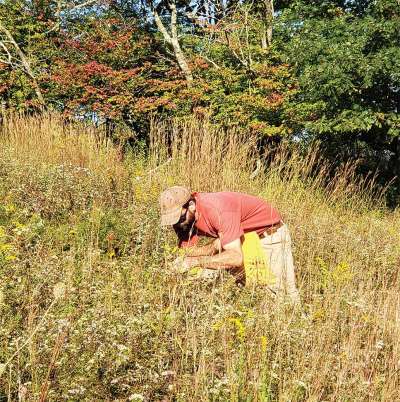
The project’s name reflects its goal to create a seed bank that preserves “the wild, genetic diversity of place,” explained Sefra Alexandra, coordinator of CT NOFA’s Pollinator Health Initiative. Native plants and seeds originating in the Midwest, for example, are not identical to the same species growing wild in Connecticut. They may bloom at different times, and be out of sync with local insect pollinators. Neither will they be as well suited to grow in the local environment.
After adding to their black cohosh seed collection from another site in southwestern Connecticut and one in nearby South Salem, New York, Elkins and Hubbard brought the seeds back to Highstead. Later, they and other staff crushed the black cohosh capsules to remove the seeds. After the team cleaned the seeds, they placed them in wax envelopes for storage in a refrigerator, along with the seeds of white woodland aster, swamp milkweed, bee balm, New York ironweed, and other native species.
Elkins explained that native plants have a variety of different requirements to germinate, depending on species. Some require 30 to 60 days of cold, moist storage. Some require alternating warm and cold environments. The Highstead staff, led by Elkins, is learning through research and trial and error, and test-growing seeds in Highstead’s greenhouse. Highstead is also involved in the Pollinator Pathway, an initiative working with homeowners to plant native species and to create pollinator corridors connecting towns (see Northern Woodlands, Summer 2020), and a research project with lepidopterist Victor DeMasi and the Peabody Museum of Natural History to determine which insect pollinators use which plants.
Farmers Grow a New Crop
After successfully growing seedlings, Highstead passes them on to eight organic farms that are participating in the Ecotype Project and grow the plants to maturity. One of these is The Hickories, a diversified organic farm in Ridgefield, Connecticut. A visit on a summer day revealed a classic farm scene. Behind the two-story white farmhouse, antique barn, and greenhouses, pigs rooted in the mud and chickens pecked at the ground. But what was growing beyond them wasn’t a typical farm crop. Masses of cardinal flowers, Joe Pye weed, butterfly milkweed, and other wildflowers grew in densely packed beds in the sun. Nearby, woodland wildflowers such as white wood aster grew in the shade of trees.
Dina Brewster owns The Hickories and farms the land that her father and grandmother farmed before her. Brewster became executive director of CT NOFA three years ago. She explained her inspiration for the Ecotype Project this way: One early spring day, she was walking in the woods with her young son and spotted a queen bumblebee. They watched as it skimmed over the forest floor searching for a hole in the ground to nest in. At that moment, it occurred to Brewster that that queen bumblebee was essentially carrying The Hickories’ entire vegetable harvest for the coming season inside her. Her eggs would hatch into the worker bees that would pollinate Brewster’s crops. “Farmers need to honor that fragile moment,” she said, “and appreciate the web that supports farms.”
Concerned about insect decline, Brewster worked to expand a pollinator health initiative that CT NOFA had begun. She contacted entomologist Kim Stoner of the Connecticut Agricultural Experiment Station, chair of a native plant working group, and explained she was seeking to purchase native plant seeds to distribute to farmers. Brewster hoped that farmers could use these seeds to enhance meadows and other insect habitat. Stoner recommended planting seeds with local genes – but said that unfortunately, none were available for sale.
A light bulb went off in Brewster’s head: “Maybe we can grow them,” she thought.
Another impetus to the project was the state of Connecticut’s 2016 pollinator legislation. An Act Concerning Pollinator Health restricts the use of neonicotinoid pesticides and encourages the Department of Transportation to replace turf grass with pollinator-friendly, native plant communities along highways. It also authorizes the Connecticut Siting Council to require revegetation with pollinator habitat when issuing permits for transmission line rights-of-way. A University of Connecticut study recommended that local ecotypes be used for this work, but there were no sources of seeds or plants available. The Ecotype Project was “born out of that conundrum,” according to Elkins, along with demand from Pollinator Pathway.
Ramping up Production
Darryl Newman and his father Chuck run Planters’ Choice in Newtown, the first nursery to participate in the Ecotype Project. Darryl is a third-generation farmer; his father started the nursery 50 years ago on family land. Now it has eight growing facilities, two sales yards, and 250 acres for growing plants. A wholesale grower and reseller, it sells mostly to landscapers.
As a former employee, Elkins sought out Planters’ Choice involvement in the project; he knew that the nursery had sufficient scale to produce large quantities of plants. Darryl Newman said that he joined the project because it was the right thing to do. He also noted the growing interest in supporting pollinators, sensing there would be a demand for native plants.
He was right. Using seeds supplied by farms participating in the project, during 2020 the nursery grew plants for four public plant sales sponsored by Wilton High School and Aspetuck Land Trust. Thousands of ecotype plants quickly sold out. Newman now considers growing local ecotype native plants a viable, new offshoot of his family’s successful business and expects other nurseries to jump on the bandwagon. He had ecotype plants ready for landscapers to purchase by spring 2021, is working on organic certification, and plans to sell seeds for large-scale restoration projects by 2025. According to Newman, there is a strong possibility that ecotype sales could be the majority of their business by 2030.
Building a Backyard Corridor
Mary Ellen Lemay is the director of landowner engagement for Aspetuck Land Trust, the largest land trust in Fairfield County. The nonprofit is working to create a 40,000-acre Green Corridor linking preserves and public and private lands, which will circle through six towns. As the climate changes, the corridor will allow plants and animals to travel to areas with more favorable microclimates. Lemay encourages private landowners in the area to “become a stepping stone in the Green Corridor” by planting and maintaining native species, foregoing the use of pesticides, and reducing the size of lawns or making them bee-friendly. Not surprisingly, the land trust has become deeply involved in the Ecotype Project.
Since 2020, Aspetuck Land Trust has organized three plant sales of the locally grown ecotype plants; Wilton High School Garden Club hosted additional plant sales. In response to the Covid-19 pandemic, the trust established an online store so that homeowners could order plants in advance and pick them up at two convenient sites: Gilbertie’s Organics in Easton, Connecticut or Earthplace in Westport. Native trees and shrubs, the foundation of a good pollinator garden, were included in the sale. “It’s important to have a whole, multilayered landscape,” said Lemay. “We tell people that you want your oak leaves to look like Swiss cheese” because that indicates the presence of young insects – the caterpillars of butterflies and moths and the larvae of other pollinators – ideal food for baby songbirds.
To make it easier for homeowners to establish pollinator gardens, Aspetuck’s intern, Page Lyons, designed six different kits that included ecotype plants, garden plans, and planting directions. Customers included backyard gardeners, farmers, and conservation groups from Connecticut, New York, and Massachusetts. The most popular choice was a kit featuring beardtongue (Penstemon digitalis), an important pollinator plant with a long bloom time that’s attractive to many species of bees.
Aspetuck is also developing a native plant demonstration site at their Haskins Preserve in Westport, a 22-acre former country estate, featuring a 20,000-square-foot formal garden, a bee-friendly lawn, a pond with wetland plantings, and a pollinator meadow. “Our goal is to show people how they can improve the biodiversity in their backyards and help increase the number of pollinator and bird species,” explained Lemay. “We need to get them used to seeing the plants that were meant to be here, and infuse a new aesthetic into their gardens.” The land trust plans to hold educational workshops at the site.
Vision for the Future
Managers of the Ecotype Project hope to eventually grow enough seed to supply big infrastructure plantings such as highway corridors, utility line rights-of-way, and solar panel arrays. One idea is to work with Connecticut farmers who can accommodate larger seed plots. Another is to ask Midwestern seed companies to grow native seed of different ecotypes.
In the future, Brewster would like to grow ecotypes of coastal species such as salt-marsh cordgrass for plantings along Long Island Sound. Improving the sound’s water quality by using plants’ filtering ability is important for many reasons, she noted, including shellfish farming, one of the highest-grossing types of farming in Fairfield County. Plants such as seaside goldenrod and milkweed along the coast would also improve the migration path for monarch butterflies.
Besides its potential to improve Connecticut’s pollinator populations, restore the health of ecosystems, and benefit farms, “This project is building a stronger bridge between the conservation and farming communities,” said Brewster, “both of whom love nature and the outdoors.”
Paddling for Pollinators
In September 2020, Sefra Alexandra and nine friends paddled an 87-mile stretch of the Connecticut River to raise awareness and funds for the Ecotype Project. Their five canoes held bags containing 500 native ecotype pollinator plants, such as swamp rose-mallow and New England aster, for planting along the way. The “BOATanical expedition” started in Hanover, New Hampshire (one town south of Northern Woodlands’ office in Lyme), but did not put any plants in the ground until after the 1½-mile portage around the dam at Bellows Falls, Vermont, where Ecoregion 59 officially begins. They placed their first wild garden at a remote campsite along the Connecticut River Paddlers Trail. The second planting was in a meadow at Retreat Farm in Brattleboro, which had other wild stands left for pollinators and recently hosted a ceremony to call the area by its original Abenaki name, Wantastegok. “In this way we are honoring the ancestral lineage of the land and river, fortifying a local farm (that has given free produce to families in need during the pandemic), and ensuring pollinators have the habitat where they need it along riparian buffers between wild and cultivated lands,” said Alexandra. The group plans to paddle and plant along the remaining section of the river in Ecoregion 59 – from the Massachusetts border to Long Island Sound – this September, “putting the right plants in the right place.” For more information, see BOATanical.org.


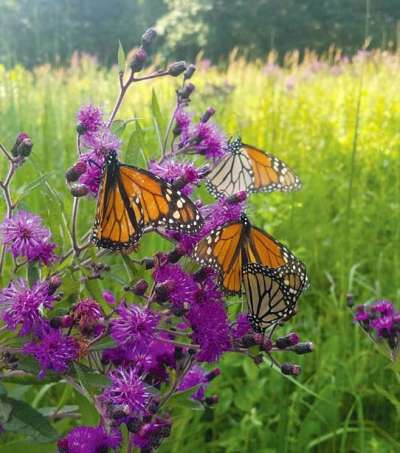
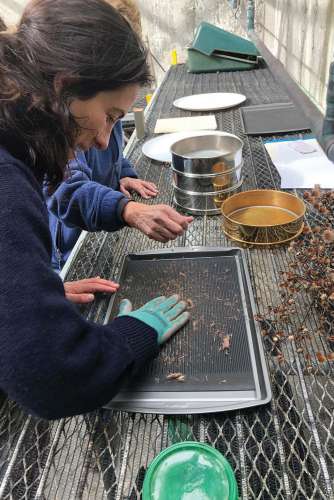
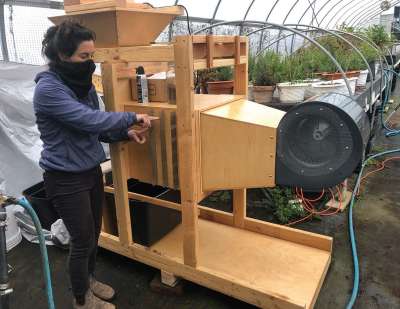
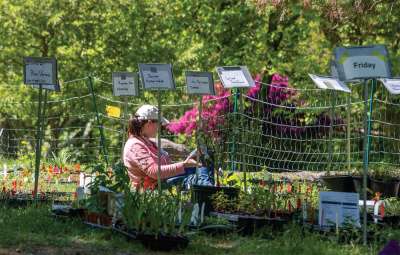
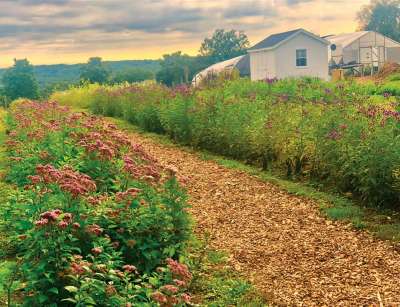
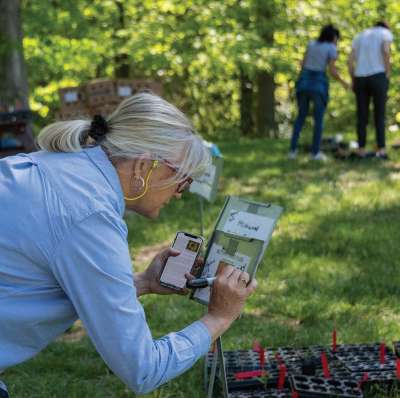
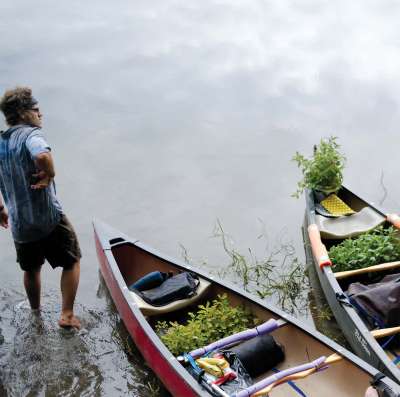
Discussion *